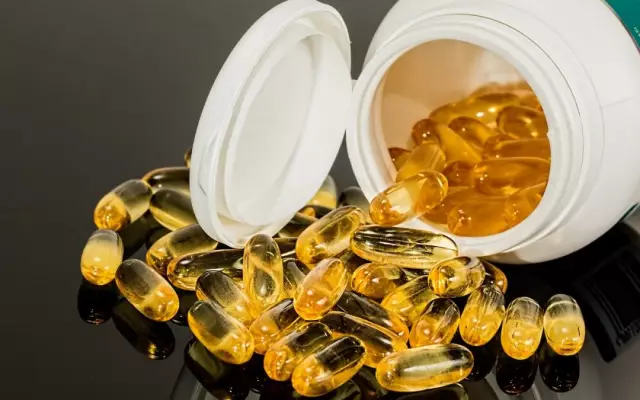- Author Curtis Blomfield [email protected].
- Public 2023-12-16 20:44.
- Last modified 2025-01-23 17:01.
Rhythmic continuous contractions of the heart muscle allow the blood to overcome the resistance created by the density of the vessels in combination with its own viscosity. The difference in blood pressure is formed and maintained by the venous and arterial parts of the circulatory system. The formation of such a difference with the appearance of areas of low and high pressure is one of the main mechanisms according to which the movement of blood through the vessels occurs.
Blood pressure
The functioning of the heart can be compared to the operation of a kind of pump. Each rhythmic contraction of the heart ventricles results in the release of more oxygenated blood into the vascular system, which causes the formation of blood pressure.

The greatest level of pressure differs in the movement of blood in the aorta, and the smallest - in the veins of large diameter. In the course of moving away from the heart muscle, blood pressure decreases, as well as the movement of blood through the blood vessels slows down.
The release of blood into the arterieshappens in batches. Despite this, there is a constant continuous blood flow in the body. The explanation for this is the high elasticity of the vascular walls. When enriched blood flows from the heart muscle, the walls of the vessels become stretched and, due to their elasticity, create conditions for the movement of blood in the direction of small vessels.
The mechanism of blood movement through the vessels is based on the occurrence of maximum pressure at the moment of contraction of the heart ventricles. The minimum pressure is observed when the heart muscle relaxes. The difference between the maximum and minimum blood pressure is defined as pulse pressure. It is stable pulse pressure indicators that indicate that the heart is working normally.
Pulse
Certain areas of the human body during palpation of the skin allow you to feel the rhythmic movement of blood through the vessels. This phenomenon is called a pulse, which is based on a jerky periodic expansion of the arterial walls under the influence of cardiac impulses.

Based on the number of heartbeats during a certain time, one can judge how efficiently the heart muscle copes with the work assigned to it. You can feel the movement of blood through the vessels, the pulse, by pressing one of the large arteries against the bone through the skin.
Movement of blood through veins
The movement of blood in the cavity of the veins has its own peculiarities. Unlike arteries, the least elastic venous walls are thin and soft.structure. As a result, the movement of blood through small veins creates a slight pressure, and in large diameter veins it is almost imperceptible or even equal to zero. Therefore, the movement of blood through the venous pathways to the heart requires overcoming its own gravity and viscosity.

The most important role in ensuring stable venous blood flow is played by auxiliary muscle contraction, which is also directly involved in blood circulation. Muscle contraction compresses the veins filled with blood, causing it to move towards the heart.
Vascular tone
The structure of all vascular walls, with the exception of small capillaries, is based on smooth muscles, which are subject to contraction even in the absence of humoral or nervous influences. This phenomenon is called the basal tone of the vessel walls. And it is based on the sensitivity of tissues to stretching, mechanical external influences, organ mobility, muscle mass.
Basal tone along with heart contractions is responsible for the movement of blood through the vessels. The process of basal tone is expressed differently in various blood-conducting pathways. It is based on the reduction of smooth muscle epithelium, as well as phenomena that contribute to the formation of the lumen of blood vessels while maintaining blood pressure, ensuring blood supply to organs.
The speed of blood flow through the vessels
Velocity of vascular blood flow is the most important indicator in the diagnosis of blood circulation. Lowest speedmovement of blood is observed in the capillary network, and the highest - in the aorta. The action of this pattern carries the most important biological meaning, since the slow movement of blood enriched with oxygen and nutrients contributes to their rational distribution in tissues and organs.

Linear blood flow velocity
Distinguish between linear and volumetric blood flow velocity. The indicator of the linear velocity of blood flow is calculated based on the determination of the total cross section of the vascular system. The total cross section of the totality of the capillary network of the human body is hundreds of times greater than the lumen of the thinnest vessel - the aorta, where the linear velocity reaches its maximum.
Taking into account the fact that there are more than two veins per artery in the human body, it is not surprising that the total lumen of the venous pathways is several times greater than the arterial one. This, in turn, leads to a decrease in the velocity of venous blood flow by almost half. Linear velocities in the vena cava are on the order of 25 cm/min and rarely exceed this value.
Volume flow rate
Determination of the volumetric velocity of blood movement is based on the calculation of its total amount when performing a full circle through the vascular system within a unit of time. In this case, the reasons for the movement of blood through the vessels are discarded, since any conducting paths always pass an equal amount of blood per unit of time.

The time of the completed circuit is the period during which the blood has time to pass through the small and large circles of blood circulation. With a he althy work of the heart and the presence of about 70-80 contractions per minute, the complete movement of blood through the vessels with the completion of the circuit occurs within approximately 22-23 seconds.
Factors contributing to active blood flow
The determining, i.e., the dominant factor that provides the mechanism for the movement of blood through the vessels, is the work of the heart muscle. However, there are also a wide range of equally important auxiliary factors for ensuring blood flow, among which should be highlighted:
- closed nature of the vascular system;
- presence of pressure difference in vena cava, vessels and aorta;
- elasticity, elasticity of the vascular walls;
- functioning of the valvular heart apparatus, which ensures the movement of blood in a single direction;
- presence of muscle, organ, intrathoracic pressure;
- activity of the respiratory system, which leads to the suction of blood.

Cardiovascular workout
He althy regulation of blood flow through the vessels is possible only when taking care of the condition of the heart and its training. During running training, the need for oxygen saturation of tissues increases significantly. As a result, to ensure the vital activity of the body, the heart has to pump much more blood than when the body is in a state ofrest.
In people leading an inactive, almost immobile lifestyle, the main reasons for the movement of blood through the vessels are exclusively an increase in heart rate. However, constantly being in a stressful state, without activating the auxiliary factors of blood movement, the heart muscle gradually begins to f alter. This tendency leads to heart fatigue, when the increase in blood supply to tissues and organs occurs in short, short periods. Ultimately, the lack of activity of the whole body, aimed at moving blood, leads to noticeable wear and tear on the heart.

Trained mobile people who are not alien to regular physical activity, whether it be sports or activity due to work, have a powerful he althy heart. A trained heart muscle is able to provide stable blood circulation without fatigue for a longer period of time. Therefore, an active mobile lifestyle, a reasonable rational alternation of rest and physical activity significantly contribute to strengthening the heart and the cardiovascular system as a whole.






